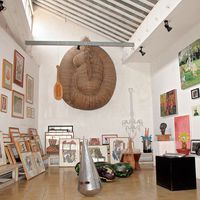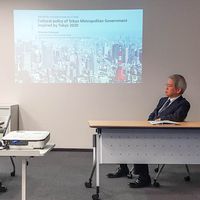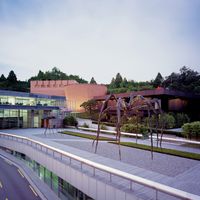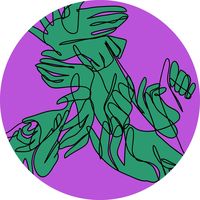Galician Center for Contemporary Art
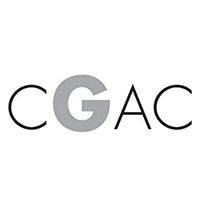
The Galician Center for Contemporary Art (CGAC) is a space for cultural diffusion, focusing on contemporary art, whose mission is to contribute to strengthen the modern art scene and to reflect on the diversity of cultural expressions in contemporary society.
Created in 1993, the CGAC can be set within the policy of cultural normalisation which started in the decade of the 1980s with the aim of promoting the development of cultural infrastructures and favouring the entry of Galicia in the international art scene. From its birth, the CGAC has been exhibiting the main trends of art in the last decades, setting up retrospectives on internationally established artists as well as exhibitions devoting to the promotion of Galician art, including both reputed artists as well as emerging ones. Also, the consistently present collaborations with other institutions are strengthened through long-term projects and initiatives.
Film seasons and conferences, workshops, seminars and concerts, make up the centre’s fundamental offer of activities, aiming to involve a wide range of audiences from the professional sector of the world of art and culture to an increasingly larger group of artists and fine art and history students, not to mention all those interested in the evolution of art and aesthetic reflection. At the same time, the CGAC develops specific programmes for schools and colleges as well as guided tours, with the purpose of providing the various groups who come to the museum with the necessary tools to understand contemporary art and, from there, the world we live in.
The CGAC's permanent collection was established in 1995 and since then it has been steadily enhanced by the addition of works from the Galician and international context, with a special focus on Spanish, Portuguese and Latin American artists. Its collections have increased as a result of a coherent procurement policy, based on quality and diversity criteria, and it currently has more than 1,200 pieces acquired through the institution’s annual budgets or via donations from private collectors, institutions or artists.
Similar content
03 Dec 2018
02 Nov 2017
10 Feb 2011
posted on
26 Jun 2011
from - to
08 Dec 2012 - 14 Apr 2013

